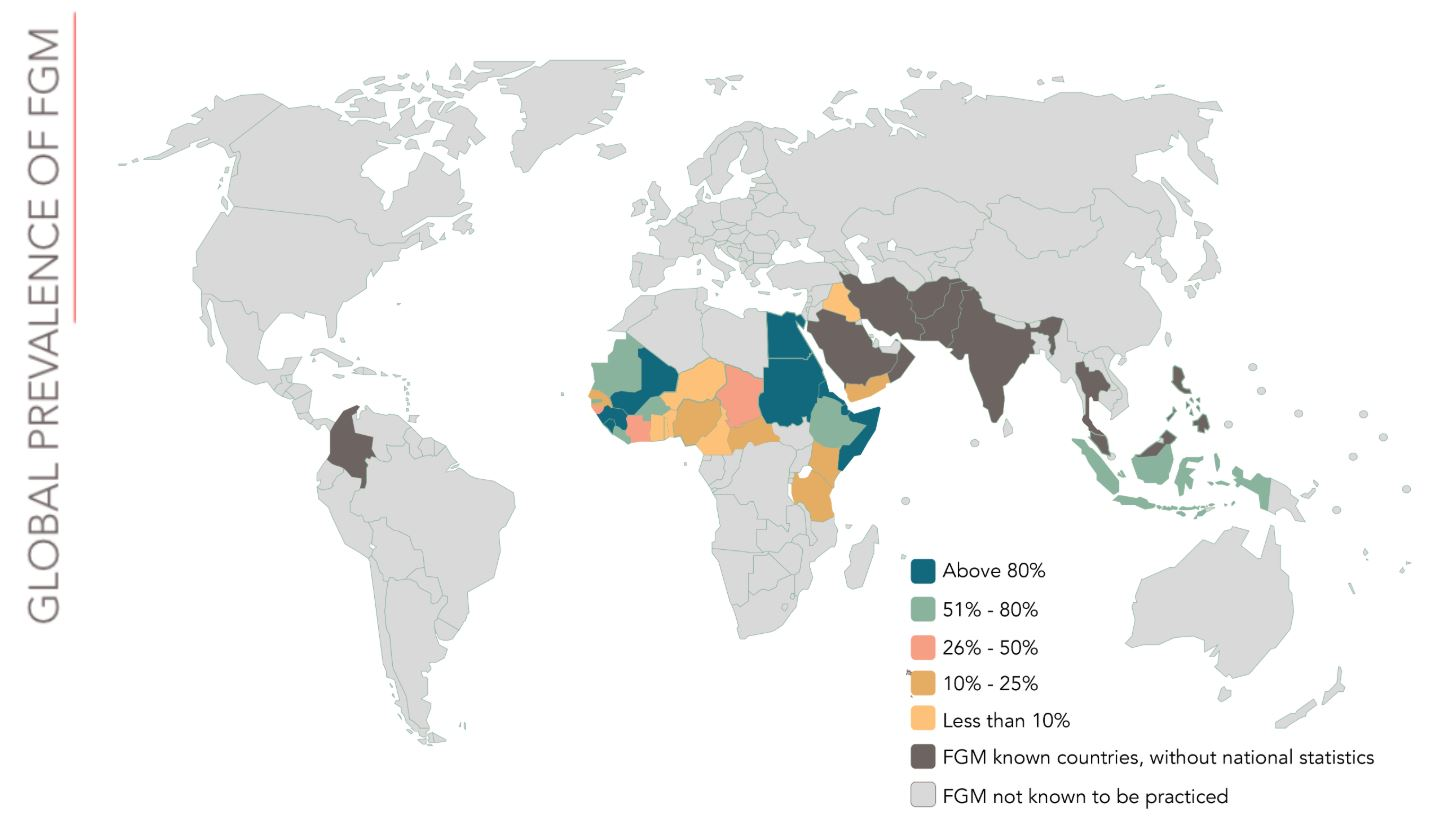Facts for UPSC Mains
International Day of Zero Tolerance for Female Genital Mutilation
- 13 Feb 2025
- 5 min read
Why in News?
The world observed the International Day of Zero Tolerance for Female Genital Mutilation (FGM) (6th February) under the theme "Step up the Pace", emphasizing the need for stronger alliances and expanding movements to end FGM.
Note: The International Day of Zero Tolerance for FGM was established by the United Nations General Assembly in 2012 to raise awareness and mobilize global efforts to eliminate FGM.
What is Female Genital Mutilation?
- Definition: FGM involves altering or injuring the female genitalia for non-medical reasons. It is internationally recognized as a violation of human rights (violates non-discrimination on the basis of sex), health, and integrity of girls and women.
- Health Impacts:
- Immediate: Severe pain, excessive bleeding, infections, shock, and even death.
- Long-term: Chronic pain, infections, menstrual and sexual health issues,
- Global Prevalence: Over 230 million girls and women worldwide have undergone FGM, mostly in 30 countries across Africa, the Middle East, and Asia.
- FGM is usually performed on young girls between infancy and age 15. An estimated 4 million girls are at risk of undergoing FGM every year, averaging 12,000 cases per day.
- Reasons for Practicing FGM: In many communities, FGM is seen as a necessary part of raising a girl, preparing her for adulthood and marriage. It is believed to control female sexuality, ensuring premarital virginity and marital fidelity.
- Some mistakenly believe that FGM is a religious requirement, although no religious texts prescribe the practice.
- Rooted in gender inequality, FGM is gender-based violence that harms girls' bodies and endangers their lives.
- Elimnaiton: The UN aims to eliminate FGM by 2030 under Sustainable Development Goal 5.3, which targets ending harmful practices like child marriage and FGM.
- Challenges: Progress remains uneven, with opposition in some regions, such as Gambia's attempts to repeal the FGM ban.
- Nearly 7 million girls and women have accessed prevention services, but the global decline must be 27 times faster to end FGM by 2030.
- Of the 31 countries where data is collected on FGM prevalence, only 7 are on track to meet the 2030 UN SDG target to eliminate the practice.
- Increasing trend of healthcare providers performing FGM, under the false belief that it makes the practice safer.
- Call for Collaborative Efforts: Countries like Kenya and Uganda have shown declining prevalence rates due to community-led initiatives and stronger policies.
- UN agencies urged for increased collaboration among governments, civil society, healthcare providers, and grassroots organisations to eliminate FGM.
FGM in India
- The reasons for FGM referred to as “Khafd” in India to practiced uphold tradition, follow religious edicts, and control women’s sexuality.
- It is mainly practiced by the Bohra Muslim community in India, with no specific law currently banning the practice.
- In 2018, a Public Interest Litigation was filed in the SC seeking a ban on FGM, citing a violation of women's rights; however, the community defended it as a matter of religious freedom under Article 25.
- The Supreme Court (SC) noted that FGM violates Article 21 (life and personal liberty) and Article 15 (no discrimination by sex). The PIL is still under consideration by the SC.
|
Drishti Mains Question: Discuss the socio-cultural reasons behind the practice of Female Genital Mutilation (FGM) and its impact on women's health and rights. |
UPSC Civil Services Examination, Previous Year Question (PYQ)
Mains
Q. Discuss the positive and negative effects of globalization on women in India? (2015)





